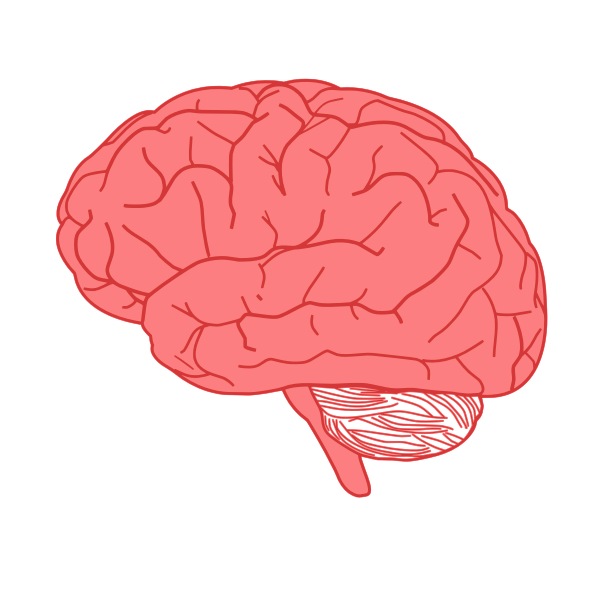The negative impact of cognitive distortions on mindset
Becoming aware of how we approach important decisions and events — and how we respond to them — is key to breaking cycles of negativity
October 29, 2021
Anyone can experience cognitive distortions, yet many people have only heard of this term with no idea what it means. Cognitive distortions are flaws in thinking that tend to be negatively biased. When people experience cognitive distortions frequently, they are at a higher risk to experience physical and mental symptoms that correlate with stress, anxiety and depression.
According to Healthline, there are ten common types of cognitive distortions.
- All-or-nothing Thinking. This is also called black-or-white thinking, and is a tendency to think in extremes (destined to succeed versus doomed for failure). These thought patterns are unhelpful because things tend to be in the middle rather than at one extreme or another.
Example: Someone believes they have to do something perfectly or not at all.
Reality: It is impossible to be perfect at everything. A 95 may not be a 100, but it is still a great grade.
- Overgeneralization. If something happens with one event, it will happen with them all. This pattern of thinking is associated with PTSD and other anxiety disorders, but not limited to them.
Example: “My ex-girlfriend left me for this, so now all my future ones will too.”
Reality: Just because one person did something does not mean someone else will.
- Catastrophizing. When faced with the unknown, someone assumes the worst will happen.
Example: “She said she was going to get to my house twenty minutes ago, she must have gotten into a car accident.”
Reality: She may have just been stuck in traffic or left late.
- Personalization. Someone takes things personally and therefore blames themselves for things beyond their control or feels as though they were intentionally targeted or excluded.
Example: A child blames themselves for their parent’s divorce.
Reality: A divorce is something that happens between adult individuals and caused by many factors. It is not the child’s fault.
- Mind reading. Someone assumes what people are thinking. This is different from empathy because empathy has more evidence and fact, whereas mind reading is a form of flawed thinking.
Example: “My friend has been really quiet today. They must hate me.”
Reality: The friend may just be tired or have some other reason for being quiet aside from hating them.
- Mental filtering. This is the tendency to filter out positives and instead focus on the negatives. Mental filtering is both inaccurate and pessimistic, which can lead to worsened symptoms of anxiety and depression as well as a feeling of hopelessness
Example: “I got a bad grade on this test.”
Reality: They fixated on a bad grade on one test while they don’t acknowledge the multiple tests they did really well on.
- Discounting the positive. Similar to mental filtering, but rather than ignoring the positive, they acknowledge it. However, they discount the positive as being luck or something that won’t happen again, rather than something caused by their own skill. Discounting the positive can make someone feel helpless in situations.
Example: “I must have gotten a good grade because the teacher is an easy-grader.”
Reality: They did well on the essay because it was well-written and researched.
- “Should” statements. Someone gets stuck thinking about what they should have said or done. This can be rooted to internalized expectations from external sources, such as the expectations of a family member.
Example: “I should have worked out longer.”
Reality: In reality, they may have worked out enough, but saying this is just a self-criticism that can hurt their self-esteem.
- Emotional reasoning. This is the false belief that your emotions are the truth. Instead of judging with logic while listening to emotions, they believe that how they feel in a situation is an indication of reality.
Example: “I feel overwhelmed so I must not be able to solve my problems.”
Reality: Although someone is overwhelmed about something, that doesn’t mean they can’t solve it. They may feel as though they will never be able to finish all of their homework, but that doesn’t mean it’s true.
- Labelling. Someone reduces themselves to a single characteristic, or labels someone else as a characteristic.
Example: “I am a failure.”
Reality: If someone repeats to themselves that they are a failure, they are going to believe it, but this does not make it true.
Someone might wonder what the harm is of negative thoughts. After all, most people experience them from time to time. However, all of these cognitive distortions can be associated with heightened feelings of negativity. The more frequent they are, the more negatively a person will feel.
Bree Maloney of Marque Medical says, “Negative thoughts and emotions are a natural response to disaster and heartache. But extended bouts of negativity can result in serious health problems. Negativity sends our body into stress, or ‘fight-or-flight’ mode.” Extended periods of negative thinking makes it harder for the immune system to fight diseases, which is why a pessimist is more likely to get sick than an optimist.
Physical symptoms that stem from negativity can range from headaches, sleep problems, fatigue and changes in metabolism to an upset stomach, chest pain, anxiety and depression. Some of these symptoms can become more severe, such as an upset stomach leading to gastritis or a stomach ulcer. The increased blood pressure from stress may put someone at risk of a heart attack.
Overall, the stress from negativity tenses up muscles in the body, which is what causes the chest pain many people experience during panic attacks. Depression and anxiety alike may cause insomnia which leads to fatigue, or the fatigue could be from living with the mental illness itself. Dealing with symptoms from the negative thoughts only worsens a person’s negative feelings.
Mentally, negative thoughts lead to an array of emotions. Elizabeth Scott of VeryWellMind, says, “Anger, fear, resentment, frustration and anxiety are negative emotional states that many people experience regularly but try to avoid. And this is understandable—they are designed to make us uncomfortable.”
Luckily, there are ways to avoid experiencing these forms of mental discomfort or the physical pain that can be associated with negativity. People have to either learn to take preventative measures or how to deal with cognitive distortions and negativity as the thoughts arise.
Practicing methods of a positive outlook at life is important to prevent the complications that cognitive distortions bring. Although it is not helpful to go to the opposite extreme of unchecked optimism, being able to actively work on happiness to prevent negativity can benefit health. Gratitude, for example, is linked to happiness. By expressing gratitude to someone or something in your life, you may be able to appreciate things more and have a more positive outlook on life.
Another suggested coping strategy for managing negative emotions is to take a few minutes of mindfulness each day to envision your best self. This is an efficient way of boosting your mood in only five minutes a day. A third method is to simply take a mental health day and fill it with the types of self care you enjoy that will benefit you the most.
If you are already experiencing cognitive distortions, the best method is to work on reframing your negative thoughts. For every negative thought, make three counter thoughts that don’t have any cognitive distortions. Doing this helps to retrain your brain to not resort to negative thoughts. The more you practice this, the easier it is the next time you experience them. If you’re not motivated to challenge the thoughts, think about what they are costing you. Maybe the cognitive distortions offer you an unhealthy method of coping, but at the cost of physical and mental pain.
If you are struggling to practice reframing the cognitive distortions yourself, or are experiencing them frequently, you may want to consider looking into therapy. Cognitive behavioral therapy, or CBT, is a common form of therapy that works on challenging cognitive distortions and to better regulate your emotions. If therapy is too expensive for you, another option is to use a free app to help you. There are many apps that use the basis of CBT to help their users. For example, CBT Thought Diary has a function to write out your negative thoughts, identify the cognitive distortion, and then it leads you through steps to challenge it. It also offers other features, such as a mood tracker.
Cognitive behaviors are not based on fact, so there is no reason to let them try to control your emotions and thoughts. Learning to recognize them and change them around can help you to take control of your life and view things more positively. This outlook can help you to live a longer, healthier and happier life where you can less frequently experience those negative mental and physical symptoms that go along with cognitive distortions and negative thoughts.








